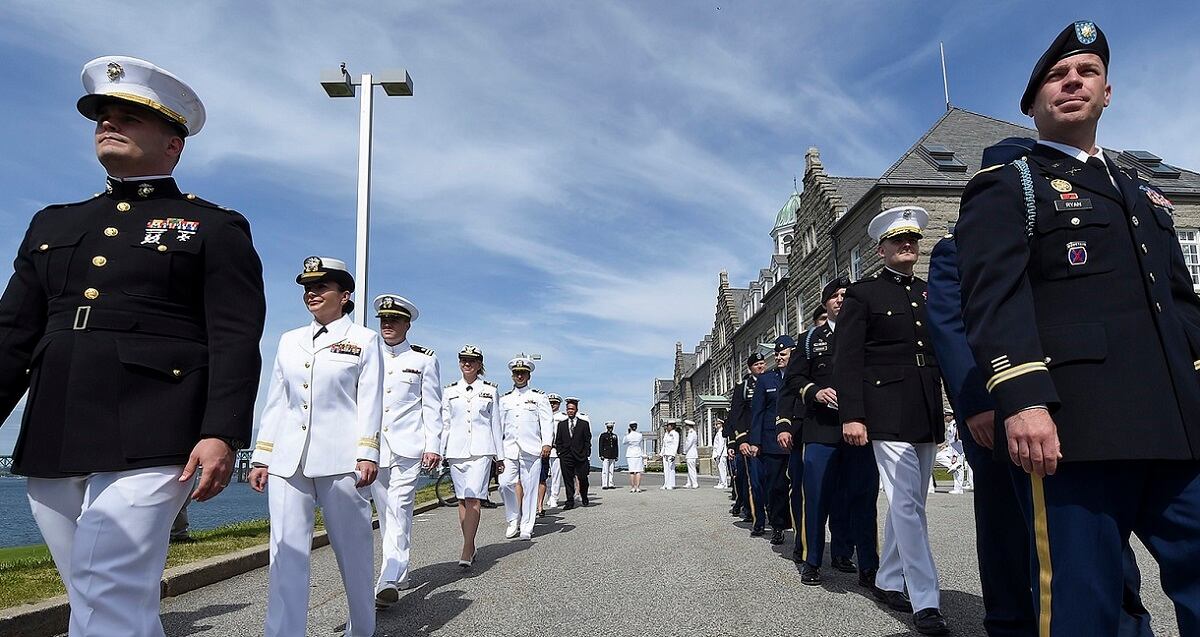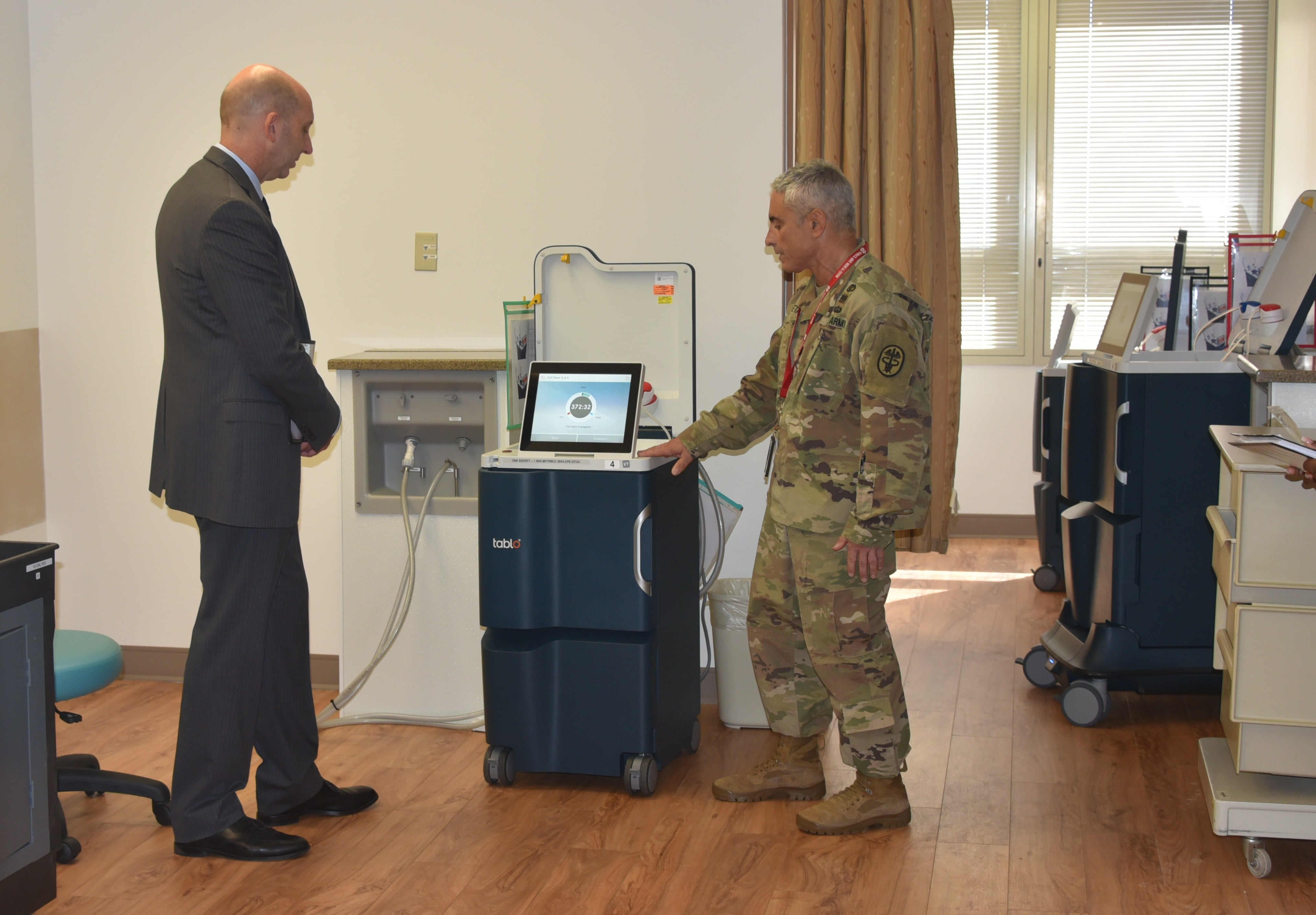One of Adm. Bud Zumwalt’s most revered pieces of advice reminded sailors that it was far better to act now and beg forgiveness later than to request permission in advance. With flat budgets at best, accelerating real annual uncontrolled cost growth of perhaps 5 to 7 percent and the prospect of profound changes in how wars and military conflicts will be fought in the 21st century information age, the naval services should take Big Z’s advice in thinking through the future.
Unfortunately, the Navy seems set in its ways. A report to Congress on naval readiness may be quite damning, according to The Wall Street Journal, putting the Navy under greater pressure. Fortunately, the Navy has two past efforts that could help respond to these criticisms and the effects of a shrinking budget.
When he was undersecretary of the Navy, Thomas Modly attempted to do that by commissioning two important efforts. The first was the Education for Seapower study (E4S), a fundamental review of naval education and how to make maximum use of it. Second was Breaking the Mold (BTM), a two-year effort at the Naval War College to examine and create alternative naval strategies and force levels to deal with the growing array of threats, dangers, uncertainties and opportunities.
Sadly, while both produced important and indeed vital recommendations, as happened with every prior educational study conducted for the Navy, E4S has sunk without trace. The BTM effort was likewise rejected and forgotten. This unhappy record raises three basic questions.
First, what did E4S and BTM conclude and recommend? Second, why were the results dismissed? And third, should the Navy reopen both efforts in some form?
E4S was co-chaired by Modly, the vice chief of naval operations and the assistant commandant of the Marine Corps. The board consisted of a former CNO and CJCS; a former ISAF commander; the former president of National Defense University; a future Air Force secretary; and a former National War College and Naval War College professor of strategy. The board concluded that naval education had greater potential if it were directed towards increasing critical thinking at all levels, from E-1 to O-10; better integrated, coordinated and funded; and, as Marine Gen. Al Gray argued, concentrated on the most formidable weapon we have — the gray matter of our sailors and Marines.
The key recommendation was a Naval University — a federation of all naval educational assets including the Naval Academy; OCS and NROTC; the Naval War College and Postgraduate School; Marine Corps University; and flag, general officer and civilian educational programs. The NWC president was to be double hatted as head of both and given three stars. The intent was to integrate and coordinate all education to ensure the naval services would make best use of these critical assets.
A chief learning officer, directly reporting to the secretary of the Navy, and a Naval Community College were also recommended. The results were briefed to the secretary of the Navy; the CNO; and the commandant. The board strongly and unanimously supported all the recommendations, particularly the creation of a Naval University.
Breaking the Mold was an effort to examine a wide range of strategic and force-level options based on rigorous assumptions about future environments and international conditions, budgets, politics and other factors, which turned out to be remarkably prescient. Two of the recommendations called for a “Porcupine Defense” in Europe and a “Mobile Maritime Line of Defense” in Asia. Porcupine was based on disrupting any possible Russian military thrust west with greater emphasis on drones, unmanned vehicles, deception, electronic and other forms of warfare as well as on non-kinetic active measures that would make an attack too costly.
The Mobile Maritime Line of Defense would contain the PLA and PLAN to the first island chain, with similar emphasis on unmanned platforms, as in the Porcupine Defense, along with allies to help bottle up Chinese forces. Both strategies could be implemented for somewhere between $600 and 650 billion fiscal 2019 dollars. A further recommendation was to build no more CVNs after the John F. Kennedy because of costs and vulnerability.
What happened? The naval leadership rejected the concept of a Naval University. No reason was given. A CLO was chosen who later resigned after the position was downgraded. A Naval Community College was formed and is a work in progress. Although Modly directed that all naval educational institutions be fully funded, that decision was reversed and education budgets were cut.
For similar reasons and because the decision was made not to challenge the National Defense Strategy, BTM, likewise, was neutered. While one can appreciate the pressures, the Navy still could have evaluated the BTM recommendations against the NDS, if only as a test.
Interestingly, while the commandants changed, the Marine Corps is indeed embarked on its own BTM and should be congratulated on the effort. And the E4S complemented the Marine Corps on how it viewed and embraced education, something it was hoped its sister service would have undertaken as well.
What can be done? While the Navy has long favored technical education and on-the-job at-sea training — often in favor of more conventional educational endeavors — with a new secretary appointed, another E4S-like effort should be convened. Basic questions must be answered. How important are war college and advanced strategic education vis a vis at-sea and operational assignments?
While promotion to major command and flag requires some form of graduate education, why is this rule not rigorously applied? How well integrated and coordinated is naval education and who is in charge and responsible?
For the Naval Academy, what is the balance between graduating professional naval officers and ensigns and second lieutenants with strong bachelor’s degrees? Why do each of the other services require junior and senior war college attendance or the equivalent for promotion to senior rank? And what can be learned from the other services?
About BTM, it is clear that a 500-, 400- or even a 350-ship navy as currently designed is unaffordable and unrealistic at the $2 billion average cost per ship. Given the technological prospects of hypersonics, quantum computing that could make the oceans transparent, cyber and other weapons, what are possible options? In the early 1980s, the Navy used the Alternative Carrier Battle Group study that in essence evaluated options from a few super carriers that could carry 200 to 300 aircraft each to smaller ones that could carry 10 to 20, and played each out in various wartime scenarios.
For example, assuming a carrier strike group, air wing, escorts and logistics costs about $30 billion, suppose that money was directed at buying 30,000 $1 million strike missiles. Or suppose 10 F-35s, nominally at $100 million each, could be used to procure 10,000 $100,000 drones? Other mixes of sensors, decoys and missile batteries can be considered. Obviously, how these systems would be deployed is part of this analysis.
The argument here is that brains, not wallets, will enable us to think — not spend — our way out of future problems. To achieve this aim, naval education, if properly utilized, is our best weapon. And Breaking the Mold of traditional thinking, if used properly and continuously, can assure us of innovative, imaginative and intellectual solutions to strategy and force structure.
For this to happen, the Navy must never ask permission to proceed on a major review. It must act now to undertake a fundamental re-examination of strategy, operational concepts, force levels, culture, education and alternatives and, if necessary, beg forgiveness later should its conclusions indeed break the mold.
Dr. Harlan Ullman served on the Education for Seapower Board and on the Breaking the Mold effort. He is senior advisor at the Atlantic Council. His latest book, due out this year, is “The Fifth Horseman and the New MAD: How Massive Attacks of Disruption Became the Looming Existential Danger to a Divided Nation and the World at Large.”
This is an op-ed and, as such, the opinions expressed are those of the author alone. If you would like to respond, or have another commentary you would like to submit, contact Navy Times Editor Kent Miller.





